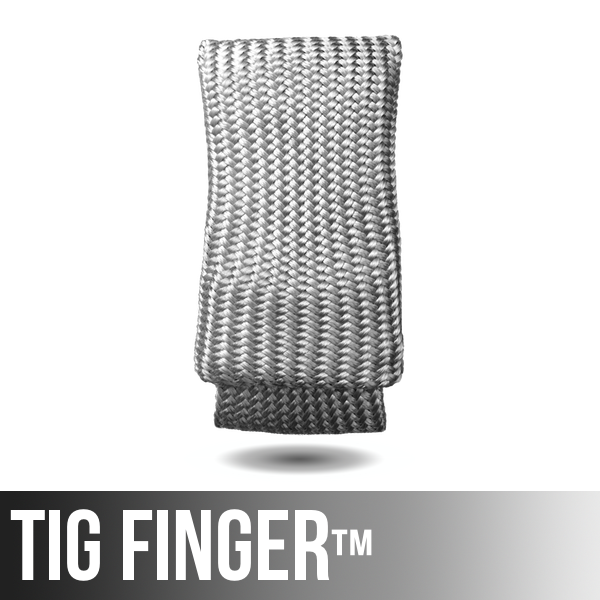Video Transcript:
MIG Welding, 7018 Stick, & Dual Shield Flux Core
Today we’re doing a little short circuit MIG welding with C25 gas, some stick welding with 70-18 1/8th, and some dual shield flux core. All on one machine, the little 210 MP. As we go, we’ll talk a little bit about what this machine can’t do, what it can do. Some of the drawbacks. Some of the pros and cons. Let’s get into it.
This is a multi-process machine. That’s what the MP stands for. It will do MIG welding. It will do lift-start TIG on DC only. It will do stick welding. I’m going to do MIG welding to start with using O30 diameter wire. 19 volts. 330 inches a minute. That’s the default setting for 3/16ths of an inch thick metal. This is quarter inch metal that I’m welding here. It does look just a little bit cold. We’ll do a little bit of testing on this a little bit later. Watch this now though. I also dropped the wire feed speed just a little bit, and look at the difference in spatter. One of them has got much more efficient burn. Both of them are going in okay, but you’re just going to get more spatter when you don’t have the sweet spot setting dialed in.
We’ll go the other direction here now. 330 inches a minute here. I did a little pushing. I did a little pulling. It’s hard to tell what I’m doing with the camera angles here. Sometimes a camera is deceptive on how much gun angle there is, but this looks like a slight pull here. Again, when I’m finished with the joint, it went along rather slowly, and it looks a little bit cold. Let’s test it. I want to see how cold it was, just whether or not it got in there or not.
You can see right down in there in the very bottom of the joint, there’s just a little dot. Some kind of little minute lack of fusion. It did okay actually for what it looked like. There’s a little suspect area right there. It’s kind of a straight line, but I don’t think it’s lack of fusion. Just a tiny little lack of fusion in the very bottom of the root of the joint.
Let’s swap over to O35 wire now. Now I’ve got some higher default settings for what thickness I’m welding. The default settings for this O35 wire were kind of high. It was actually stubbing. That’s kind of how you can tell when you’ve got too much wire feed speed. You get a little sputter sometimes. It will stutter. Sometimes that can be the ground. You want to make sure you have a really good ground, or it can fool you and you can chase your tail. But I did drop the wire feed speed to 290 here, and things smoothed out quite a bit.
I decided to test that one as well. You can see it punched down in there to the root quite a bit better. There’s still that little area though up top, on that top leg, that’s kind of a straight line. Didn’t really love that.
Let’s swap over to stick rod now. 70-18, 1/8th rod. We’re going to try 125 amps. A good rule of thumb for 70-18 is one amp per 1000th of thickness. It’s 1/8th of an inch? That’s 125,000ths. A good start point is 125 amps. I’m trying to take this thing all the way up to the edge, a full quarter inch fill, and still not get under cut. It’s kind of difficult to not chew that corner off just a little bit. In those cases sometimes it would be better just to run two passes. Run a really quick small one like this, and then let it cool a little bit. Chip the slag. Then come back over it with a second pass. That’s usually a little bit easier to fill in that way, although I didn’t do such a great job here. I didn’t hold the top long enough, or I had too long of an arc, or I was shaking too much, or something. You’ll see when I chip this slag off, I’ve got just a little bit of undercut on the corner there. I’ve got to work on some practice.
I happened to run one here and just time it, and see how long it would take to make this weld. Just long enough to flick the slag off and then change rods, and then get back in there. It was pretty much two minutes. 1.9 minutes, I think. Almost twice as long as it would take to do what I’ve done so far with the short circuit MIG. You can see why MIG a lot of the time is just more productive. Stick is the way to go outdoors when you really need to know that that weld is in there, and you’re fighting some wind and all that. Stick is a good choice. It’s not nearly as productive as dual shield flux core, and that’s what we’re going to do next.
Dual shield flux core, with that flux in there, really helps welding over some hot rolled mill scale. The kind of mill scare that comes on square tubing and box tubing and structural shapes like that. It you can’t get it all cleaned off, the dual shield flux core doesn’t seem to mind it too much. This is cold rolled I’m welding on here now. It’s just got a little oxidation. It should do just fine as far as penetration and all that goes. I’ve got kind of a low setting here. I would use this setting on, actually on out of position stuff. But that took 53 seconds, and just a few seconds to clean up. It’s a lot easier to clean up usually than stick welding if you have the settings down pretty good.
I was able to visit my friend JD a couple weeks ago. He was building a 60 foot long rack. That was one of the videos we posted a couple weeks ago. These were the settings that he used with O35 dual shield flux core on all that stuff. It did just fine. Went in just fine on the horizontal joints like this, as well as the vertical up hill. I thought I would test those settings, those same settings, using the same wire that JD used at home on my 210 MP. That was a 256, a power MIG 256. Not a multi-process welder. Strictly a MIG welder. That’s what JD used right here.
Using these settings at home worked okay on the flat stuff. Really did punch in there pretty well. The little 210 could actually handle that high wire feed speed for at least these eight inch runs no problem. The only problem, when you start getting up in the high end of the settings on a particular diameter wire, you can get these little work tracks like this. It could be your stick out. It could be a little bit too high on the voltage, or you’re just a little too hot. But usually it’s a surface condition. Grinds right out.
I dropped these settings down here a little bit. 22 volts and 333 inches a minute, and decided to just run a vertical up hill. That’s what I’m doing right here. You can see I’m using very slight torch manipulation. I’m just trying to keep that nozzle pointed dead nut straight in, 90 degrees. No push, no pull, no nothing. Here it looks like I’m doing quite a push, but I don’t think I was. It’s hard to tell when you’re under the helmet sometimes.
That one will cut and etch as well. That one turned out halfway decent. Slag came right off. Don’t see any worm tracks in that one, so lowering those values a little bit seemed to help there.
We’ll do a little quick cut and etch on that. Man, that’s just about picture perfect weld nugget right there. No suspect areas. Punched down into the root. It’s all nice and uniform. Now part of that is because it’s dual shield, and I’m sure part of it is because I ran it vertical uphill. Should have probably kept them all the same.
That was pretty interesting. I learn something every time I do a video like this. I got to looking back on my YouTube history of videos that I’ve posted. I counted up somewhere around 18 videos that I’ve done using this machine so far. I’ve done stuff with lift arc TIG on socket welds. I worked with JD on that awning where he was using a spool gun run off a generator. Lots of stuff. I’m going to show a few clips of that stuff now. We’ll talk about the ins and outs as we go. Let’s get into that.
This machine will do lift arc TIG in addition to MIG and flux core and stick. Here I’m walking the cup using a torch with a valve on it that I just clamped the stinger to an adapter block. I’m not using a foot pedal or anything. The machine does have the capability of hooking up a foot pedal, but I’m not using one here. It’s a very common way to do socket welds. This machine will do DC lift arc TIG. You won’t be able to TIG aluminum with it. When you get finished, you want to terminate a bead, you’ve just got to snap out like that. It’s very common in the pipe fitting industry to use scratch start and lift arc TIG units for work like this.
Kind of better actually than trying to have to keep your foot on a foot pedal while you’re shuffling around a pipe vice or something. Here I’m not walking the cup. I’m just using a TIG finger bearing down on the tip of that wire. They call this a lay wire technique. You’re not dipping the wire in and out, you’re just walking over the top of the wire.
Here’s another way of propping. You can see that otherwise my finger would be, I’d have to figure out a different way to prop. Your finger would just really get too hot like this. It helps to steady up. Here I’ll put the second pass on real quick, just showing, it’s very similar to walking the cup. You just kind of try to mimic that Z weave type motion that you get out of walking the cup, and you’re just free handing instead. Or in this case, again, propping with a TIG finger.
JD build a fire pit using the plasma cam to cut out all the pieces and shapes and logos and everything. This is Zach’s dog, Tilly. She’s a good girl. Those are the settings to start with using short arc MIG. Ran some beads here on these outside corner joints, just dragging a puddle along. Hardly any manipulation at all. That did a fine job. Nice bead there, nice smooth bead. Those are the settings that were used. Then to swap over to dual shield flux core, of course you have to use knurled rollers and a little bit different settings. It’s pretty easy to swap over. This is a quick shot of that.
A little bit of cleanup on dual shield. But it sure does burn in there, especially over hot rolled mill scare like is on here.
Not every machine will do a good job running off a generator, but this one will. I know it will run an aluminum spool gun with no problem off this generator here, because JD was pushing it pretty good that day. This was an aluminum awning build outdoors, doing welding on an aluminum awning. No hiccups. That’s a really nice feature, to be able to run off a generator or a drop cord without constantly popping a breaker or something.
I did a little quick push pull test here a while back. 19 volts. 330 inches a minute. I tried to keep everything the same here. I’m just going to show you this. It was a fun little video to do. There’s always that argument about push versus pulling. Some people like to push. Some people like to pull. I think as long as you stay toward the front of that puddle and you keep your stick out to a short enough length, got your settings pretty much dialed in, you can most of the time be okay with pushing or pulling, which is a good thing. Because sometimes you don’t have a choice.
Sometimes you’ve got your head up in some area. A structure, a piece of box tubing, you’re building a platform or whatever and you’ve just either got to weld to you or away from you. You just can’t get the gun angle you want. It’s good that you can make it work both ways.
The argument comes in a lot, because there’s different modes of MIG welding. This is short circuit MIG. If I was doing spray MIG I would largely be pushing.
All right. I did a push. A did a pull. I cooled them off. I cut them. I sectioned them. You can see there are just minute differences in the two. All these weld nuggets, they’re all okay.
Most small machines like this in this price range will not weld with a 60-10 rod. Unless they say they do, they probably don’t. This one doesn’t, but it does fine with a 60-11 so I did this little portable job here on a friend’s garage door. Some brackets on there, running a 60-11 off a drop cord. Did great. In other words, if you’re getting a machine thinking you’re going to practice a 60-10 root for a welding test, this is not the one for you.
Now here’s something. If you can burn a 1/8th rod continuously without overheating the machine, you’re really not limited on the thickness of metal you can weld. If you were doing multi passes like this on a big wedge, on a log splitter or something, as long as you can burn a 1/8th rod and burn it at about 140 amps, you can put in a multi pass weld on just about as thick a metal as you want to. It won’t be the fastest way to do it, but it will do it, and it will do a good job.
Wrap this video up by recommending a couple of books. I’ve recommended this one many times before, Metals and How To Weld Them. You can get it at the James F Lincoln Foundation, at jflf.org. That’s the non-profit arm of Lincoln Electric. That’s the reason these books are so inexpensive, and they’re really good books. This one also, The Procedure Handbook Of Arc Welding. It’s got all kinds of charts with parameters for MIG welding, dual shield flux core, etc.
Now I will say this. It’s probably only going to benefit those that live in the United States, because the shipping really goes up when you’re talking about shipping internationally. But anybody in the USA, I highly recommend these.







Leave a Reply